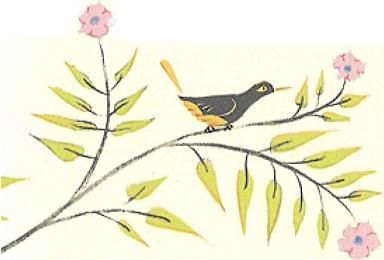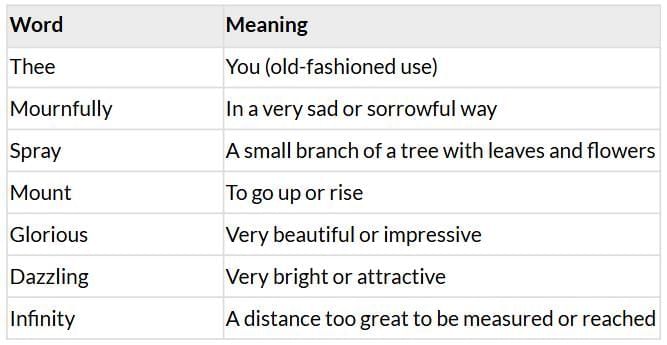Summary: Past, Present, Future | Gul Mohar Class 6: Book Solutions, Summaries & Worksheets PDF Download
| Table of contents |

|
| About the Poet |

|
| Detailed Summary (Stanza-wise) |

|
| Moral / Message |

|
| Vocabulary Table |

|
About the Poet
Emily Brontë was an English writer and poet, famous for her only novel, Wuthering Heights. She also wrote poems, many of which were published alongside the works of her sisters, Charlotte and Anne Brontë. Her writing often explores nature, emotions, and the passage of time.
Detailed Summary (Stanza-wise)
Stanza 1
Tell me, tell me, smiling child,
What the past is like to thee?
'An Autumn evening soft and mild
With a wind that sighs mournfully.'
Explanation:
The speaker asks the child what the past feels like. The child imagines it as a calm autumn evening. The wind “sighs mournfully,” meaning it seems sad and gentle at the same time. This shows that the past can hold memories that are both peaceful and a little sorrowful. It reminds us that the past is something we remember, but we cannot change.
Stanza 2
Tell me, what is the present hour?
'A green and flowery spray
Where a young bird sits gathering its power
To mount and fly away.'
Explanation:
When asked about the present, the child describes it as lively and full of life—a green branch with leaves and flowers, where a young bird is gaining strength to fly. This shows that the present is a time of growth, learning, and preparing for the future. The child sees it as exciting and full of opportunities.

Stanza 3
And what is the future, happy one?
'A sea beneath a cloudless sun;
A mighty, glorious, dazzling sea
Stretching into infinity.'
Explanation:
The child imagines the future as a vast, endless sea under a bright, clear sun. Words like “mighty,” “glorious,” and “dazzling” suggest hope, beauty, and endless possibilities. The future seems limitless, full of opportunities, and something to look forward to with joy and confidence.
Moral / Message
The poem teaches us to look at time in a thoughtful way. The past can be gentle or sad, the present is full of growth and potential, and the future is wide, bright, and full of hope. It encourages optimism, reflection, and appreciation of each moment in life.
Vocabulary Table

|
30 videos|61 docs|17 tests
|
FAQs on Summary: Past, Present, Future - Gul Mohar Class 6: Book Solutions, Summaries & Worksheets
| 1. What is the significance of the title "About the Poet"? |  |
| 2. How can a detailed stanza-wise summary help in understanding poetry? |  |
| 3. What moral or message can be derived from a poem? |  |
| 4. Why is a vocabulary table important when studying a poem? |  |
| 5. How can I effectively summarize the past, present, and future in my studies? |  |














